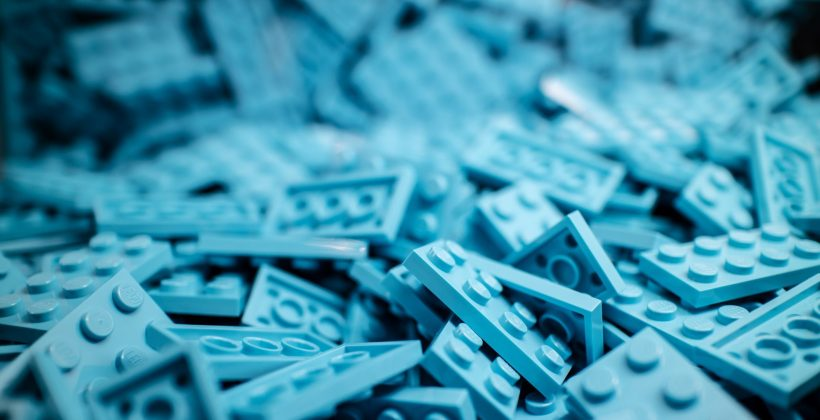
Acrylonitrile Butadiene Styrene (ABS) is one of most popular thermoplastics for 3D printing. Thanks to its sturdiness, high heat and wear resistance as well as its relatively low cost, ABS is commonly used in a variety of consumer and industrial applications. ABS is also known to be stronger and more durable than PLA, another favourite thermoplastic, although a little bit trickier to work with.
Today’s tutorial will look at the benefits and limitations of 3D printing with ABS, and also give some tips for how to overcome common difficulties and make 3D printing with ABS as simple a process as possible.
Why 3D print with ABS?
- Strong mechanical properties: ABS possesses great mechanical properties, particularly when compared to PLA. Its toughness, durability and ductility make it a great material for “wear and tear” applications. Unlike PLA, ABS can also withstand high temperatures and has better elongation at break.
- Post-processing: ABS lends itself well to various post-processing techniques. Sanding, painting (with acrylic paints), gluing, milling, drilling, and cutting – all of these post-processing steps can be done with an ABS part. As an acetone-soluble plastic, ABS can also be smoothed by acetone to achieve a glossy surface finish.
- New materials: ABS can be used to create materials with enhanced properties. Such materials include properties like biocompatibility, conductivity, and translucency, to name a few. Like nylon, ABS can also be mixed with other materials for greater mechanical properties, e.g. PC-ABS (polycarbonate-ABS) with superior strength and heat resistance.
- Accuracy: 3D printing with ABS can create dimensionally accurate parts. , ABS prints tend to be dimensionally accurate with minimum features as small as 1.2 mm, although it should be noted that printer settings and complexity of a part mainly determine the level of accuracy.
What are the limitations of 3D printing with ABS?
- ABS is hygroscopic, meaning it absorbs moisture from the air. If not stored correctly, humid ABS filaments can lead to either a poor quality print or even to a failed printing process due to clogging of a nozzle.
- ABS materials can be damaged by prolonged exposure to sunlight, which will negatively affect the quality of a print. So for the applications which will be exposed to the direct ultraviolet light, it’s better to choose a UV-resistant filament, for example, ASA.
- When working with ABS, the proper temperature setting is required to ensure that a print cools down slowly. A slow cooling process prevents the cracking of a part and is also responsible for better layer adhesion. Managing the right temperature, however, can be a little time-consuming and can involve some trial and error.
- When heated, ABS emits intense and smelly fumes which may cause irritation and headaches. Therefore, 3D printing with ABS requires a working space with good ventilation. However, many available FDM 3D printers are equipped with either an enclosure or a filter and a fan for fume extraction.
- Rapid temperature changes during the printing process can also cause printing issues like warping and shrinkage. However, these effects can be minimised by following the tips we’ll discuss below.
Common Applications
ABS is a good filament for general-purpose 3D printing. Common applications for the material include functional prototyping, concept modelling, and production of tooling as well as some end-use parts.
ABS properties like thermal stability, ductility and machinability make it ideal for manufacturing low-cost prototypes and architectural models for engineers or research departments, and also low-cost medical prostheses, tool handles and even plug holders for electric cars. This material can also be found in some 3D printed toys, like LEGO bricks.
Thanks to its electric insulation properties, ABS filaments can be used to create electronics enclosures. The automotive industry uses ABS to produce tools like jigs and fixtures as well as customising interior car components. Back in 2014, Local Motors even 3D printed the entire frame and body of a car with ABS reinforced with carbon fibre.
Tips and tricks
Basic printing requirements:
Extruder temperature: 220-250 °C
Print bed temperature: 95-110 °C
Enclosure: highly recommended
Print bed covering: recommended (Kapton tape, ABS Slurry)
- ABS is sensitive to temperature changes, and this can cause the material to shrink. For this reason, a heated print bed is a must-have when printing with ABS. Ensure that the print bed is heated to 110º C to prevent shrinking. It is also advisable that a 3D printer has an enclosure to prevent any rapid temperature changes.
- As a rule of thumb, it is typically good practice to print the first few layers of your part with a temperature 10 to 20 degrees higher to ensure that the layers properly adhere to the print bed.
- For better layer adhesion also consider covering the print bed with Kapton Tape. This will also make it easier to clean the print bed afterwards. Another option may be an ABS slurry: mix a little bit of ABS filament with acetone and spread it over the print bed before printing.
- Larger ABS prints can also be plagued by warping. To prevent this, factor an additional brim around the bottom edges into the design of your part. A brim adds several rings of material which are attached to the part on the first few layers. Brims aid in better layer adhesion and prevent curling. Once the object is complete, a brim can be easily removed.
- As ABS produces irritating fumes when heated, ensure that you print in a well-ventilated area.
- Since ABS filaments absorb moisture, don’t expose them to air and water for long periods of time. It’s crucial to store the filament rolls in sealed containers in cool, dry places to prevent degradation.
3D printing with ABS may initially take some time and effort as you find the right settings for your application. However, in spite of this, ABS possesses a wide range of benefits which, coupled with its low cost, make it a go-to material for consumer-grade as well as industrial applications.
Source: https://amfg.ai/2018/06/29/abs-plastic-3d-printing-all-you-need-to-know/